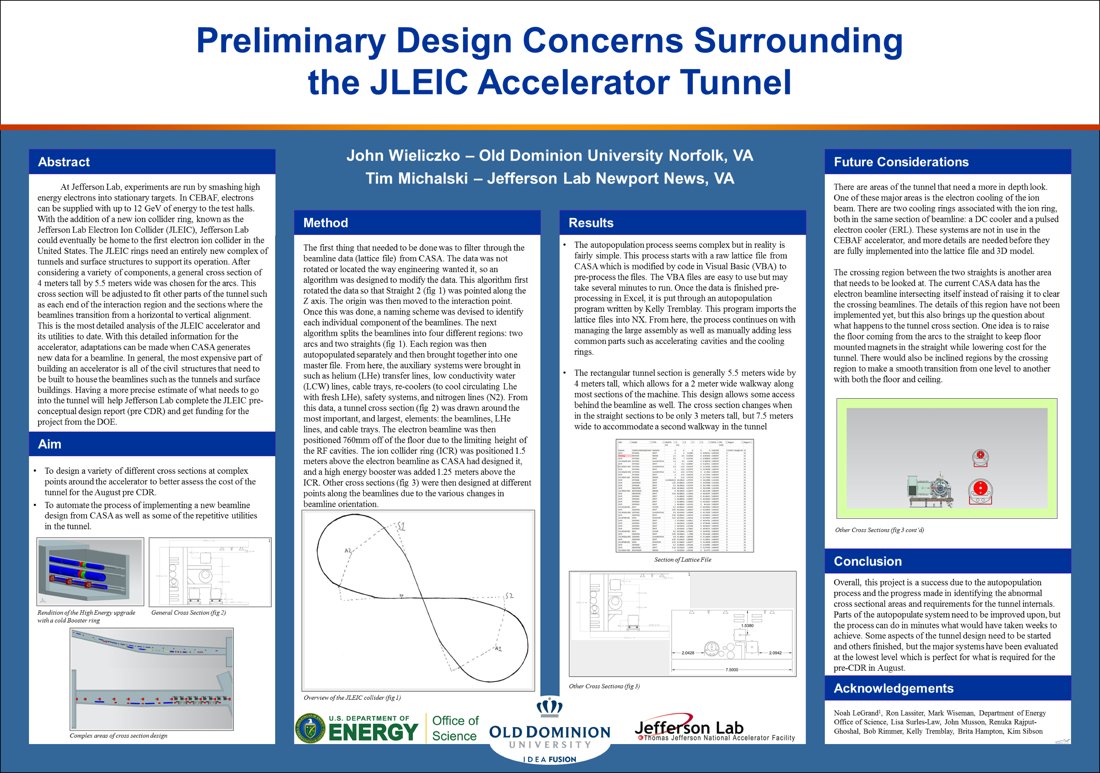Undergraduate Research at Jefferson Lab
Preliminary Design Concerns Surrounding the JLEIC Accelerator Tunnel
Student: John Wieliczko
School: Old Dominion University
Mentored By: Tim Michalski
At Jefferson Lab, experiments are run by smashing high energy electrons into stationary targets. In CEBAF, electrons can be supplied with up to 12 GeV of energy to the test halls. With the addition of a new ion collider ring, known as the Jefferson Lab Electron Ion Collider (JLEIC), Jefferson Lab could eventually be home to the first electron ion collider in the United States. The JLEIC rings need an entirely new complex of tunnels and surface structures to support its operation. After considering a variety of components, a general cross section of 4 meters tall by 5.5 meters wide was chosen for the arcs. This cross section will be adjusted to fit other parts of the tunnel such as each end of the interaction region and the sections where the beamlines transition from a horizontal to vertical alignment. This is the most detailed analysis of the JLEIC accelerator and its utilities to date. With this detailed information for the accelerator, adaptations can be made when CASA generates new data for a beamline. In general, the most expensive part of building an accelerator is all of the civil structures that need to be built to house the beamlines such as the tunnels and surface buildings. Having a more precise estimate of what needs to go into the tunnel will help Jefferson Lab complete the JLEIC pre-conceptual design report (pre CDR) and get funding for the project from the DOE.

Citation and linking information
For questions about this page, please contact Education Web Administrator.
